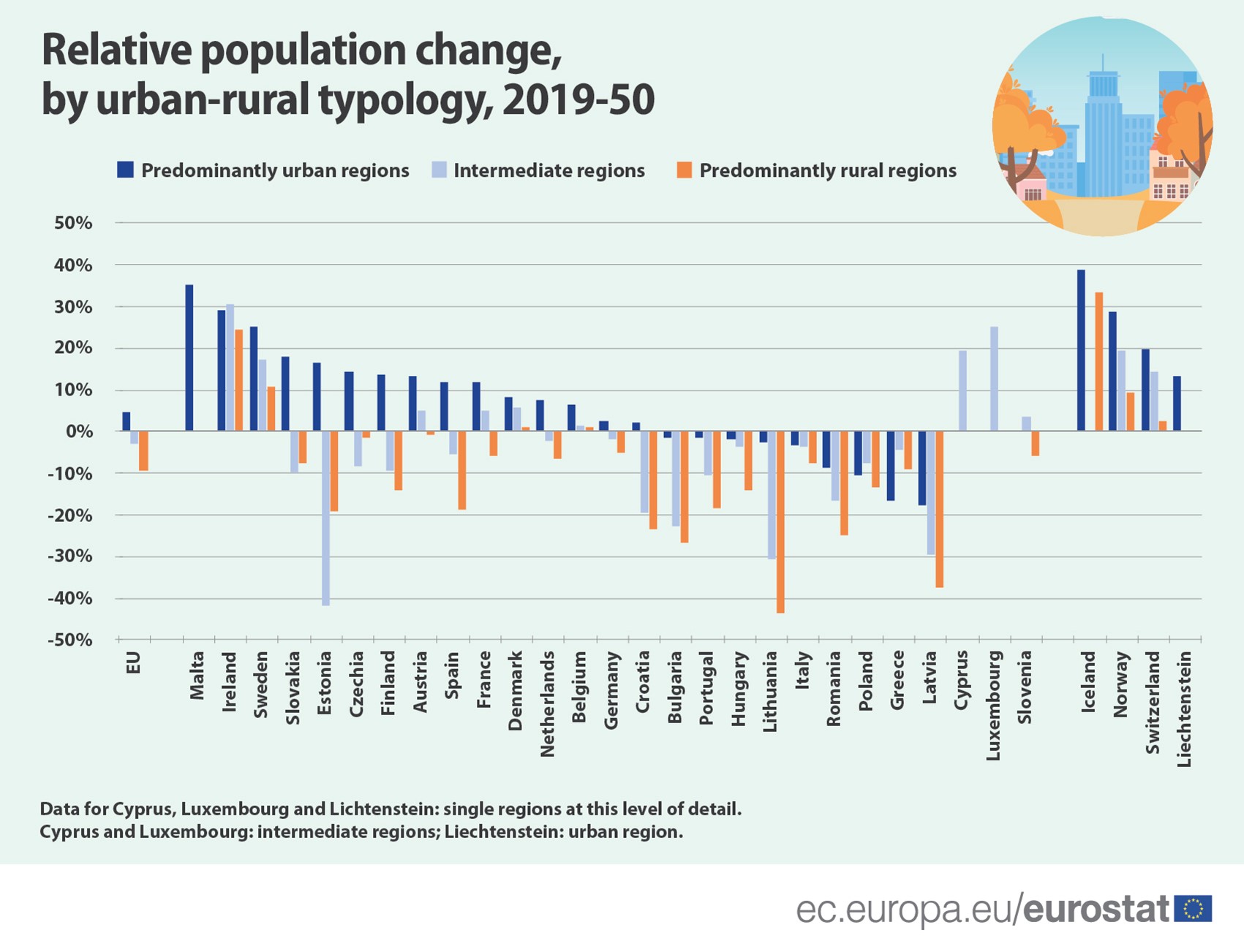In 2019, 46% of the EU population lived in flats, while just over a third (35%) of the population lived in detached houses and almost one fifth (19%) lived in semi-detached or terraced houses.
Statistics
Populations are projected to grow in almost three out of five urban regions of the European Union (EU), whereas they are likely to shrink in four out of five rural regions by 2050.
The social distancing measures that were introduced as a response to the COVID-19 pandemic forced many people to work from home.
To prevent the spread of the COVID-19 pandemic, countries around the world have taken a variety of restrictive measures since the beginning of 2020.
The EU household saving rate continued with a large year-over-year increase in the fourth quarter of 2020, climbing +6.6 percentage points (pp) higher than it was one year ago.
Since early 2020, restrictive measures have been taken to slow down the spread of COVID-19.
Economic activity, and therefore the labour market across the EU, has been hit by the COVID-19 pandemic.
In 2020, the COVID-19 pandemic and the government measures to curb its spread affected the labour market in the EU.
In the fourth quarter of 2020, the labour market in the EU continued to show indications of a potential recovery.
In 2020, exports and imports of medicinal and pharmaceutical products increased (blue dots in the visual below) in the vast majority of the EU Member States - despite the general decrease in trade









